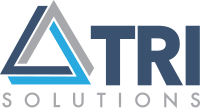Manufacturers, by the very nature of their business, are continually making adjustments. Some days they’re…

DCAA: Talent & Technology
What does your business need to maintain a competitive edge? To be profitable? To retain a strong talent pool to support individual and business success?
Ask that question of 100 CEO’s and you will get 100 different answers, but scratch a little deeper and you will see a theme emerging.
People.
Success is all about people. It is about leaders, it is about empowering your people to be engaged, to be working in a culture of leadership.
What is the easiest and fastest, most efficient way to a culture of leadership?
The right technology solution. A solution that provides real time, accurate information in the right format to allow leadership decisions to be made throughout the enterprise. Quickly, efficiently and with no fuss.
That is what a culture of leadership truly is.
Today, a lot of leadership teams, are looking to new ERP(Enterprise Resource Planning) software to either move them off of a QuickBooks or XERO solution due to the rapid growth of their business and the need to have an integrated platform or to move off of an old out dated legacy ERP Solution such as Sage, Solomon, or a plethora of others. Many of these leaderships teams misunderstand one of the greatest benefits of a real time cloud based ERP system – it’s ability to create a culture of leadership.
And too many business leaders fail to see the benefits of technology. They see it as too difficult to implement, or too expensive, or too “something else”. They see it as madness to disrupt their operations to implement ERP. However, there is a simple method to this madness when approached correctly!
Did you know that updating your technology does not solve all your challenges? ERP is a tool. A tool that when implemented and set up with a vision in mind that will aid the employees/people/talent within your organization to have information, automation, simplified processes to help with the execution of the company vision. A tool that encourages a culture of leadership. When that culture emerges, many of your problems will resolve themselves.
There is one major exception to what I have said above. If you are subject to DCAA requirements you fall into an entirely different group of businesses with a much larger problem. If you are required to meet DCAA regulations, you are flirting with disaster if you have not already implemented a DCAA compliant ERP system. If you are relying on your employees to get it right, and you have not created a culture of leadership, disaster will arrive sooner than later. You MUST be prepared.
I’m the CFO at Texas Research International Inc. (“TRI”) an Austin, Texas based company. I started my new journey with TRI on August 31, 2016. My first adventure: replace the old DOS based ERP system (KCS) with Acumatica the best new Cloud Based ERP Solution for Small to Mid-sized Companies ($10M – $500M Revenue)! It was important to simplify the process!
There are more failed ERP implementation efforts out there than there are successful ones. So, risk of change is always hovering over a discussion such as this. I have previously been through 3 implementations and with lessons learned I knew Step 1: you must keep it simple and remove complexity. Get up and running as quickly as possible. Replace what you have and then expand from there.
What did I do? I evaluated the product, made-a-plan, and was up and running by January 1, 2017. How do you replace an ERP system for 14 entities in just over 90 days you ask????? By keeping the process simple!
I’m assuming by now you are wondering what does this have to do with DCAA: Talent & Technology?
Simple – at TRI we have 14 entities. We have one entity that does made-to- order manufacturing, a few entities that do testing services, a couple with consulting services, and one with engineering services for the government requiring our processes to be DCAA compliant. How in the world did I get a new ERP system up and running for all these types of businesses in just over 90 days????
Keep it Simple!
This is not to be meant to focus on how to implement ERP. This article is meant to focus on the benefits to your talent; the people that drive the success in your business, by implementing technology to support them.
So, what makes a system DCAA compliant?
- The ability to segregate cost by project and task.
- The ability to report overhead, G&A, fringe, and subcontract rates separately.
- The ability to separate direct costs from indirect costs.
- The ability to separate non-allowable expenses under FAR part 31 from other expenses.
- The ability to track inception to date my contract.
- Flawless time keeping practices.
- The ability to have proper oversight and an audit trail with authorizations in place for every change.
- The ability to capture travel expenses per Government contacts.
- Approval of a procurement process in line with Government requirements.
This is a high-level summary of what must be in place to obtain DCAA approval of your system and provide eligibility for you your company to bid and win Government contacts. The key to approval does not just rely on your technology system. Ultimately is comes down to your employees following what is required. However, the more of these requirements that can be automated the fewer hours will be required to meet reporting requirements as this information will be a click away any time any day!
Once TRI replaced its existing system, which by the way was DCAA compliant in the legacy system and needed to meet those same standards in the new system, we then engaged our employees to help us gain insight and knowledge about how they’d like to improve processes moving forward. Employee engagement is critical to reaping the benefits of new technology. It requires the full team to deploy technology that makes a movement… it can’t remain in the hands on a handful of individuals.
After deep dive discussions with our employees, the determination was that we needed to expand our usage of the Acumatica Platform to automate more of their contract management, billing and reporting requirements. The goal? Free them up to spend more time bidding and winning more contracts and engaged in the direct contract work. The emergence of a culture of leadership.
See, at TRI our win, for our DCAA compliant company Texas Research Institute, Austin, comes from developing new technology that ensures our customers have safer products. An even bigger win is when we develop something our customer wants us to commercialize and use repeatedly.
How do win contacts? By having superior engineering talent and by having control over our overhead rates keeping us competitive against other firms all why ensuring we remain DCAA compliant. Automation allows a reduction in overhead costs thereby driving an increase in direct costs.
We have made a practice at TRI to invest in technology that will empower our team to excel and achieve at their highest potential.
The people are what makes the company successful. The Technology with an integrated platform provides a roadmap for employees to achieve greatness!
Today, at this 44-year old company, we are seeing growth in our employees, growth in their contributions to the company vision, growth in our revenues, growth in our profits and continue to build meaning in our lives. We have built a culture of leadership that serves our DCAA compliant business as well as our other businesses.
Why are you waiting? That DCAA auditor could be knocking on your door tomorrow!
Contact me at TRI Solutions Inc (512) 615-4480 or check out our website at erpmadesimple.com to learn more about how me and my team at TRI Solutions Inc can help you achieve new heights in your business today!



